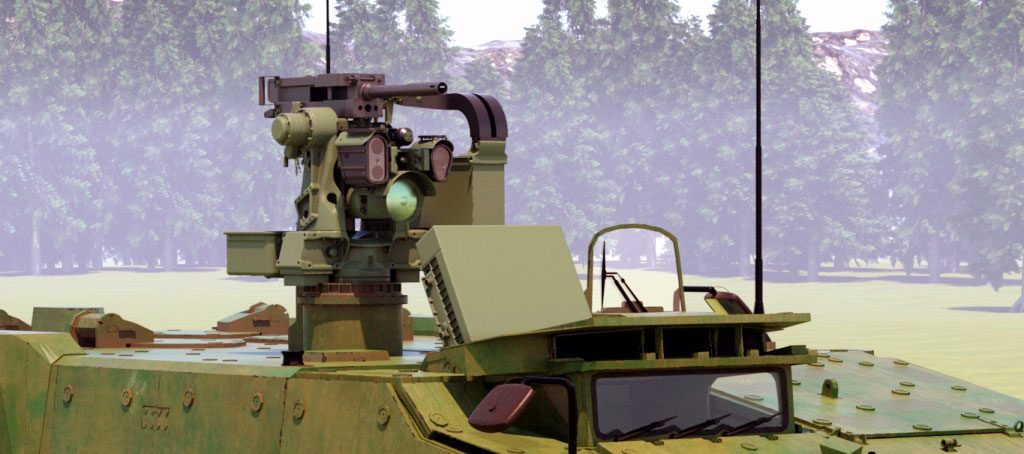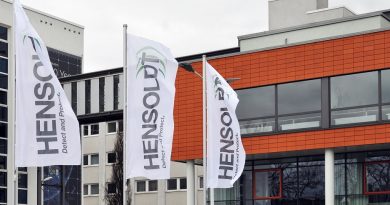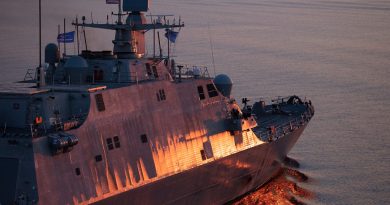
Hensoldt unveils its new Spexer 2000 3rd Gen radar for C-UAS and not only
By Paolo Valpolini
Constantly evolving a product increasing its performances and capabilities is common practice in the defence arena. This is the path followed by Hensoldt, the German sensors house, for its Spexer family of radars, born in 2006, three members being part of the company portfolio, Spexer 360, Spexer 500 and Spexer 2000, the reference numbers divided by 100 showing roughly the detection range in kilometres of a walking man. Born as ground detection radar, the high-end product, the Spexer 2000, is however a much more complete radar, that since the second generation added to the detection of surface land and sea targets also that of aerial ones, such as helicopters and airplanes. Each addition did not cancel the previous capabilities, while radars also evolved from 2D to 3D, the very last member of the Hensoldt Spexer family being the Spexer 2000 3D MkIII, the last indication showing that it belongs to the third generation of such radars. The new product of the German company would have definitely been highlighted in its stand at Eurosatory 2020.
“We kept many of the core elements and functionalities,” André Hanewinkel, the Radar Systems Engineer in the Spexer programme tells EDR On-Line, “in order to ensure risk reduction and maximum reliability.” However, the new radar is pretty different from its predecessors, although the configuration, using a fixed panel AESA (Active Electronically Scanned Antenna), provides a 120° (±60°) sector electronic scanning in azimuth. However the new radar adds a key function, a Counter-UAS capability, which made it the sensor of choice for the German Bundeswehr “Qualifizierte Fliegerabwehr” programme aiming at providing German forces with an anti-drone protection. The sensor is being integrated with Kongsberg’s Defence & Aerospace AS Protector RCWS (Remotely Controlled Weapon Station) armed with an H&K 40 mm Automatic Grenade Launcher fitted with airburst ammunition, the defensive system to be installed on a Boxer 8×8 armoured vehicle. Ten such vehicles should be acquired, to be provided to the German contingent that will be the framework element of NATO’s Very High Readiness Joint Task Force (VJTF) in 2023.
“Our new radar not only keeps all 2nd generation functions, adding that against UAS, but it is also much smaller and lighter,” André Hanewinkel points out: the dimensions of the X-band AESA antenna provides the same performances, are 600x500x200 mm (versus 1,000x700x200 mm), its weight being 35 kg (versus 73 kg) “And its compactness considerably favours its integration into vehicle platforms, one of the most obvious uses of the new radar.” As all Spexers also the newcomer works in the X-band, thus operating in the 9.2-10 GHz, with a 15 MHz bandwidth at operational frequency and over 100 channels. The GPU (Generation and Processing Unit), which is made of the Radar Frequency Unit and the Radar Processor, has a weight of 40 kg, its dimensions being 600x400x300 mm. However this is not the only key improvement in the antenna, as it “also allows us to detect targets at very high elevation angles, if the selected mode requires it, which ensures a hemispheric coverage when operating three antennas covering 360°, something we didn’t have in the second generation systems,” Mr. Hanewinkel adds, underlining also that the latest version ensures the scan-on-the-move capability, something that will definitely be of use in the C-UAS task, when the Boxers equipped with the Protector and the Spexer 2000 will escort convoys, but also in the future, when the Hensoldt radar might acquire further capabilities.

Today this multi-beam radar can operate from 1 to 16 pencil beams per antenna, and when operating 16 beams simultaneously it can reach a very high update rate, allowing the detection of small and fast moving targets, among those UAS. The shortest update rate is approximately 0.3 seconds, while in slow-scan rate this goes up to approximately 7.5 seconds; while the number of beams increases the update rate it also reduces the range, therefore the maximum instrumented range, 40 km, is obtained with the single beam option, while with 16 simultaneous beams this is of 2.5 km. In perspective Hensoldt is looking at targets with even higher speeds: “Five years from now our roadmap is considering the detection of targets flying at up to 1,500 m/s, which will mean that our radar might well become the sensor for some type of effector capable of defeating APFSDS rounds,” the Hensoldt radar expert tells us, announcing the opening in perspective of a wholly new market, that of APS (Active Protection Systems). In fact the physical basis is already there and the architecture gives the possibility to deal with such targets, measurements having been done with Mk II radars, however finalized algorithms within a serially mature software are part of the development roadmap of the Mk III radar, that will also require more processing power.
As all Spexers, also the new family product features a very intuitive smartphone-like human-machine interface, on which the operator can see all kind of targets detected and classified by the radar, over 300 targets can be tracked in parallel, a 1 Gbit Ethernet LAN link to command and control systems being available.
Back to the “Qualifizierte Fliegerabwehr” programme for Germany, all components successfully passed the Critical Design Review, a live-firing of the system having already been carried out, and now full integration is ongoing with the aim of delivering the first systems within year-end. The IOC (Initial Operational Capability) configuration features a single antenna, hence a 120° coverage, however the system can be easily upgraded to provide full 360° coverage should the need arise. The first batch of 10 systems is, as said, intended to provide C-UAS coverage to the German VJTF contingent; the Bundeswehr needs definitely a more widely distributed capability in that field, which might bring to further orders in the coming years. The Spexer 2000 3D Mk III “has already attracted considerable interest on the international market as well,” André Hanewinkel says, “however we are not looking only at the C-UAS market, the radar capabilities being much wider, thus battlefield surveillance and Ground-Based Air Defence are the two other market segments in which we are actively promoting our last product.” Hensoldt already carried out successful measurements on Kinetic Energy projectiles, and is looking forward starting cooperating with companies involved in APS effectors in the near-term future.
Photo courtesy Hensoldt


